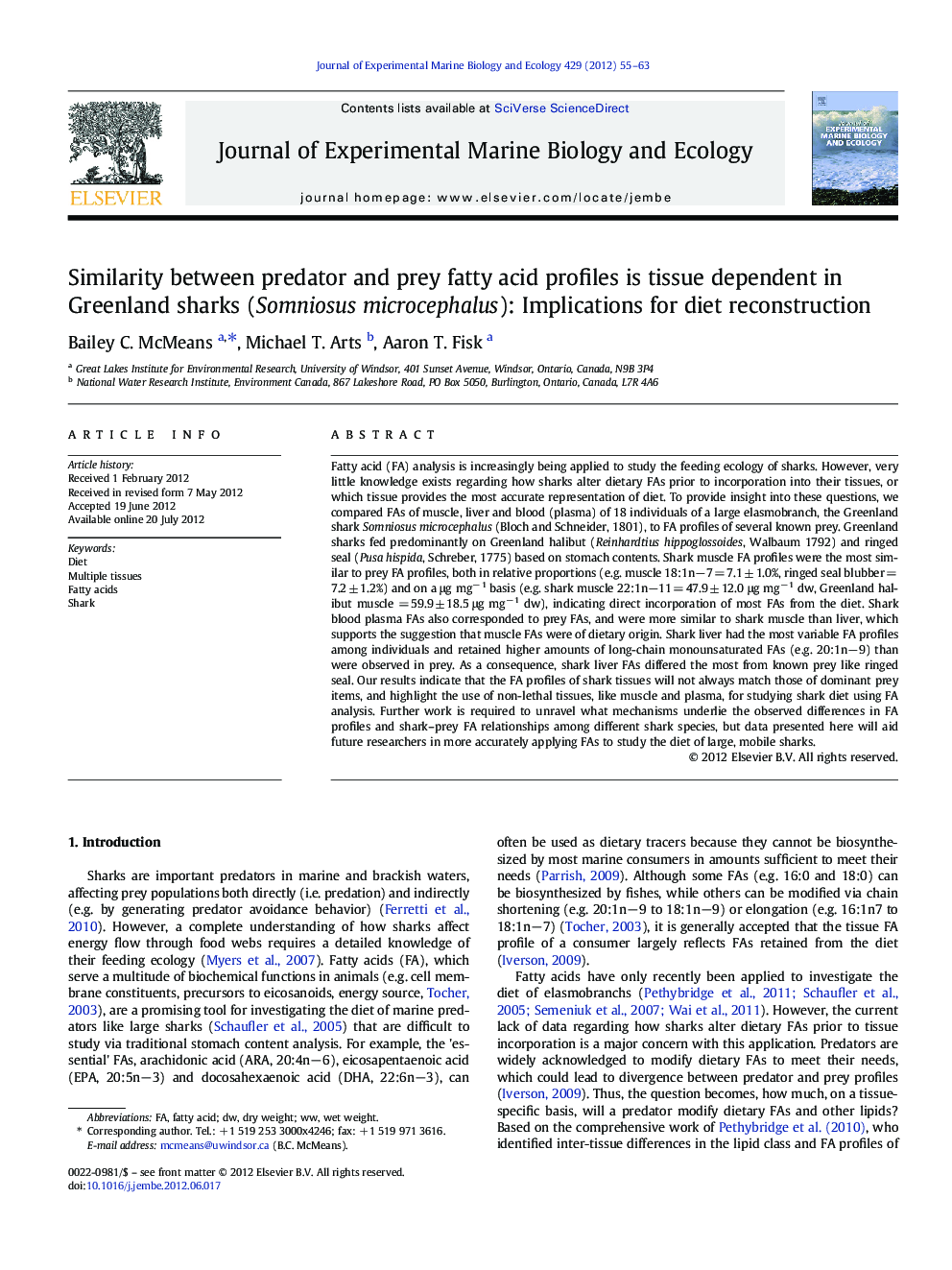| کد مقاله | کد نشریه | سال انتشار | مقاله انگلیسی | نسخه تمام متن |
|---|---|---|---|---|
| 6304440 | 1618442 | 2012 | 9 صفحه PDF | دانلود رایگان |

Fatty acid (FA) analysis is increasingly being applied to study the feeding ecology of sharks. However, very little knowledge exists regarding how sharks alter dietary FAs prior to incorporation into their tissues, or which tissue provides the most accurate representation of diet. To provide insight into these questions, we compared FAs of muscle, liver and blood (plasma) of 18 individuals of a large elasmobranch, the Greenland shark Somniosus microcephalus (Bloch and Schneider, 1801), to FA profiles of several known prey. Greenland sharks fed predominantly on Greenland halibut (Reinhardtius hippoglossoides, Walbaum 1792) and ringed seal (Pusa hispida, Schreber, 1775) based on stomach contents. Shark muscle FA profiles were the most similar to prey FA profiles, both in relative proportions (e.g. muscle 18:1nâ7 = 7.1 ± 1.0%, ringed seal blubber = 7.2 ± 1.2%) and on a μg mgâ 1 basis (e.g. shark muscle 22:1nâ11 = 47.9 ± 12.0 μg mgâ 1 dw, Greenland halibut muscle = 59.9 ± 18.5 μg mgâ 1 dw), indicating direct incorporation of most FAs from the diet. Shark blood plasma FAs also corresponded to prey FAs, and were more similar to shark muscle than liver, which supports the suggestion that muscle FAs were of dietary origin. Shark liver had the most variable FA profiles among individuals and retained higher amounts of long-chain monounsaturated FAs (e.g. 20:1nâ9) than were observed in prey. As a consequence, shark liver FAs differed the most from known prey like ringed seal. Our results indicate that the FA profiles of shark tissues will not always match those of dominant prey items, and highlight the use of non-lethal tissues, like muscle and plasma, for studying shark diet using FA analysis. Further work is required to unravel what mechanisms underlie the observed differences in FA profiles and shark-prey FA relationships among different shark species, but data presented here will aid future researchers in more accurately applying FAs to study the diet of large, mobile sharks.
⺠Greenland shark muscle fatty acids were similar to prey fatty acid profiles. ⺠Shark liver fatty acids differed the most in magnitude from those of prey. ⺠Shark blood plasma fatty acids were more similar to shark muscle than liver. ⺠Shark liver fatty acids were the most variable among individuals.
Journal: Journal of Experimental Marine Biology and Ecology - Volume 429, 1 November 2012, Pages 55-63